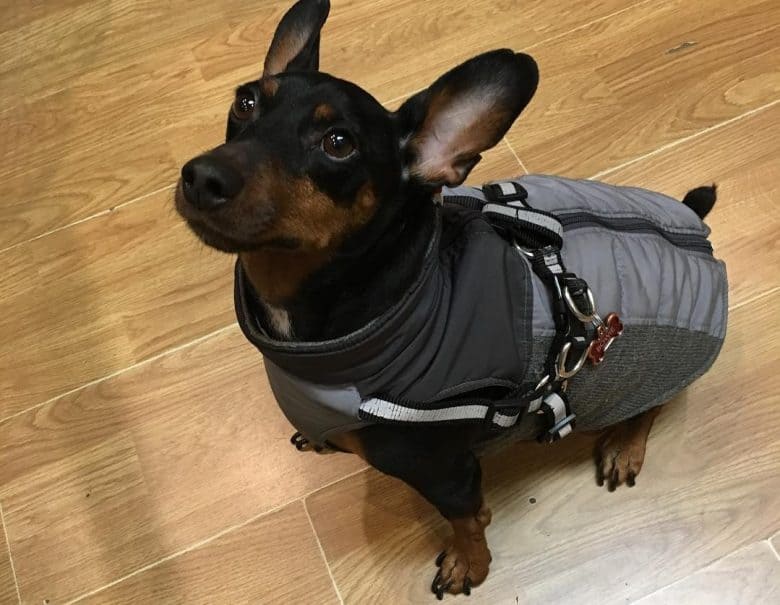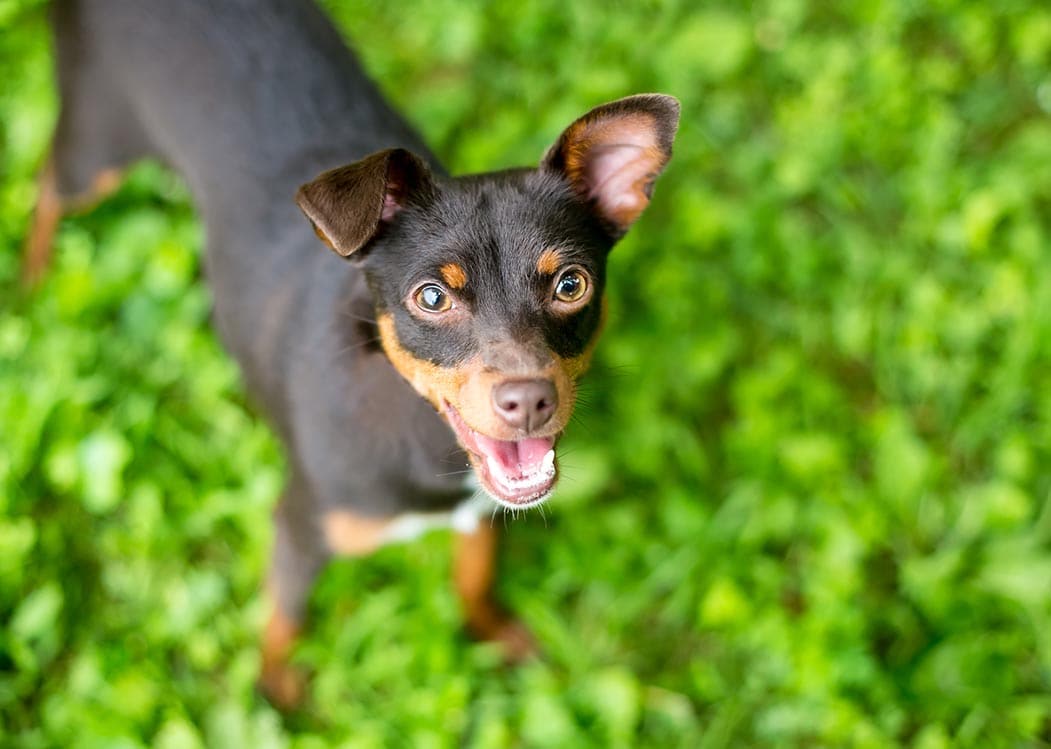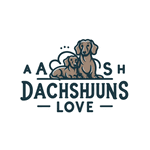Each dog breed has its own unique charm, but when two breeds are combined, the result can be truly special. One such hybrid is the Miniature Pinscher and Dachshund mix, affectionately known as the Min-Dox. This lively and loyal companion combines the best traits of both parent breeds, creating a dog that’s full of personality and love.
In this guide, we’ll take an in-depth look at the Min-Dox, covering their appearance, temperament, training needs, health concerns, and tips for raising a happy and well-adjusted pup. Let’s explore everything you need to know about this endearing mix.
Contents
- 1 Appearance: A Blend of Two Distinctive Breeds
- 2 Temperament: Energetic, Affectionate, and Alert
- 3 Training and Exercise: Keeping Them Active and Engaged
- 4 Health Considerations: Common Issues and Preventive Care
- 5 Living with a Min-Dox: What to Expect
- 6 Conclusion: The Perfect Blend of Charm and Personality
Appearance: A Blend of Two Distinctive Breeds

The Min-Dox is a captivating mix of the Miniature Pinscher’s athletic build and the Dachshund’s signature long body. While their appearance can vary depending on which parent they take after, most Min-Dox dogs have a sturdy, compact frame with short legs and a sleek, shiny coat.
- Height: 8–12 inches at the shoulder
- Weight: 10–18 pounds
- Coat: Short, smooth, and low-maintenance
- Colors: A variety of shades, including black, tan, red, chocolate, and dapple
- Distinctive Features: Ears may be floppy like a Dachshund’s or upright like a Min Pin’s
Their small size and adorable features make them an excellent choice for pet owners who want a dog that’s both manageable and full of character.
Temperament: Energetic, Affectionate, and Alert

The Min-Dox inherits a mix of personality traits from both parents, resulting in a dog that’s playful, loving, and sometimes a little headstrong. Here’s what you can expect:
- Energetic and Playful: These pups are always ready for fun and need regular activity to keep them happy.
- Affectionate and Loyal: Min-Doxes form strong bonds with their families, often following their owners around like a shadow.
- Intelligent but Stubborn: While they’re quick learners, their independent streak can make training a challenge.
- Watchful and Protective: Thanks to their alert nature, they make excellent watchdogs and will quickly alert you to unfamiliar sounds or visitors.
- Prey Drive: Like both parent breeds, Min-Doxes may chase small animals, so early training is important.
Their vibrant personality makes them a joy to be around, but consistent training and socialization are essential to help them thrive.
Training and Exercise: Keeping Them Active and Engaged
Training a Min-Dox requires a mix of patience, positive reinforcement, and consistency. While their intelligence makes them quick to pick up commands, their stubborn streak can make them resistant to training if not approached correctly.
Training Tips:
- Start Early: Begin training and socialization as soon as possible to establish good habits.
- Positive Reinforcement: Use treats, praise, and rewards to encourage good behavior.
- Short Sessions: Keep training sessions brief and engaging to hold their attention.
- Address Stubbornness: Be patient but firm, and avoid giving in to their independent nature.
Exercise Needs:
Despite their small size, Min-Doxes are full of energy and require daily physical and mental stimulation.
- Aim for 30–45 minutes of exercise per day, including walks, playtime, and interactive games.
- Activities like fetch or puzzle toys can help keep their minds sharp and their bodies active.
Providing consistent exercise will help prevent boredom, which can lead to destructive behaviors.
Health Considerations: Common Issues and Preventive Care

Like all mixed breeds, the Min-Dox can inherit health conditions from either parent. While they are generally healthy dogs, it’s important to be aware of potential issues and take steps to keep them in good health.
Common Health Concerns:
- Patellar Luxation: A condition where the kneecap slips out of place, causing discomfort or limping.
- Obesity: Both parent breeds can be prone to weight gain, so portion control and exercise are key.
- Dental Issues: Their small size can lead to crowded teeth, increasing the risk of plaque buildup and gum disease.
- Intervertebral Disc Disease (IVDD): Dachshunds are prone to back issues, and Min-Doxes may inherit this vulnerability. Avoid activities that put strain on their spine, such as jumping off furniture.
Preventive Care:
- Schedule regular vet check-ups to monitor for any health concerns.
- Provide a balanced diet with portion control to maintain a healthy weight.
- Brush their teeth regularly to prevent dental problems.
- Encourage gentle play and use ramps or steps to protect their back from strain.
Living with a Min-Dox: What to Expect

Min-Doxes are adaptable and can thrive in various living situations, from apartments to larger homes, as long as their needs are met. Here’s what to keep in mind:
- Space Needs: Their small size makes them suitable for smaller living spaces, but they still need daily walks and playtime.
- Family Dynamics: They are affectionate with family members but may be wary of strangers. Early socialization helps them feel more comfortable around new people and pets.
- Interaction with Kids: While they can be great with older children, they may not tolerate rough handling by very young kids. Always supervise interactions.
- Grooming: Their short coat is low-maintenance, requiring only occasional brushing and bathing as needed.
Conclusion: The Perfect Blend of Charm and Personality
The Min Pin Dachshund mix is a delightful hybrid with a big personality packed into a small frame. Their energy, intelligence, and devotion make them wonderful companions for those willing to invest time in training, socialization, and exercise.
By providing them with love, structure, and proper care, the Min-Dox will reward you with endless affection and playful antics. Whether you’re looking for a lively playmate or a loyal lapdog, this unique mix is sure to bring joy to your home for years to come.
